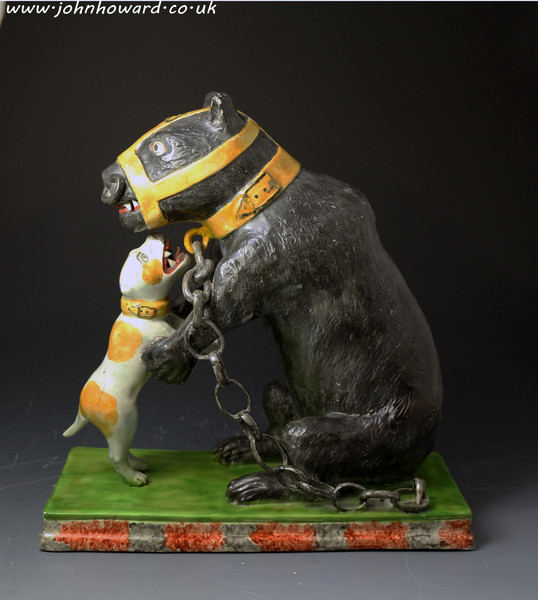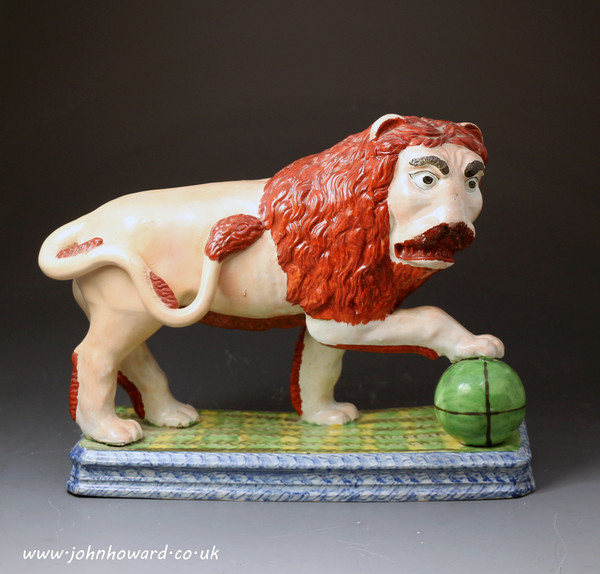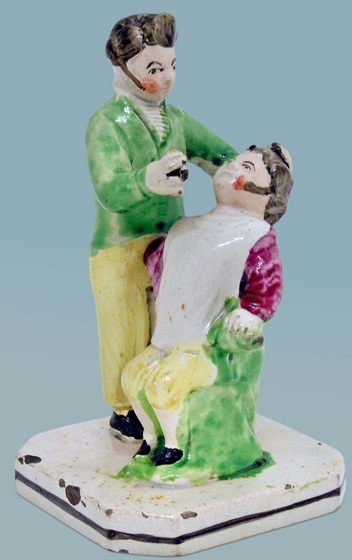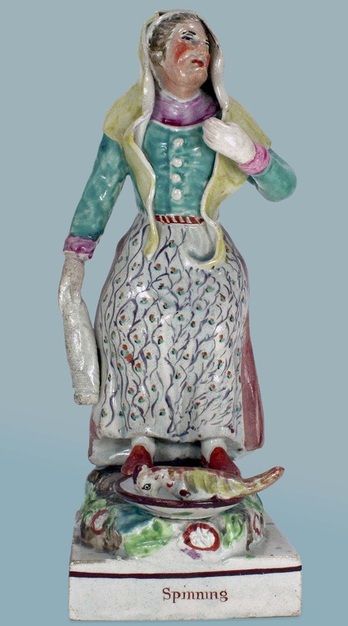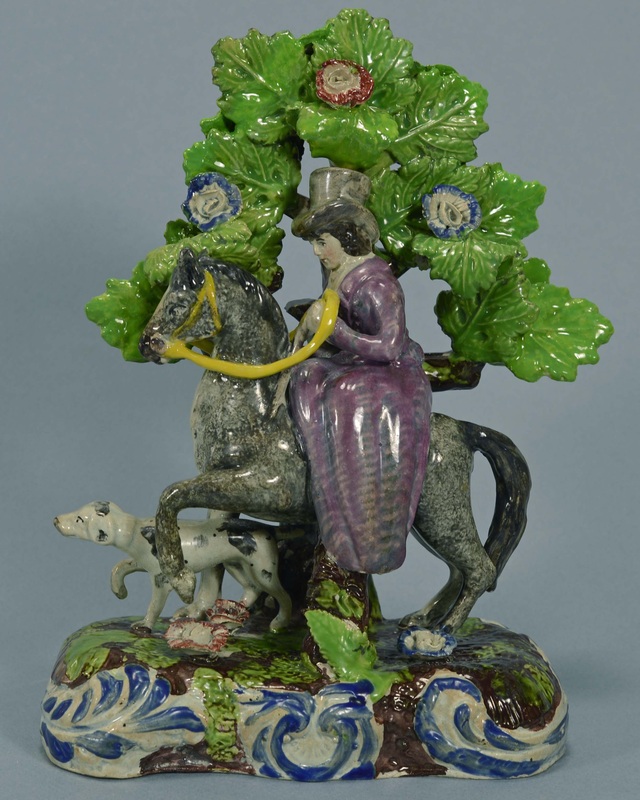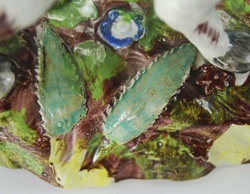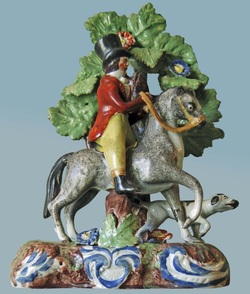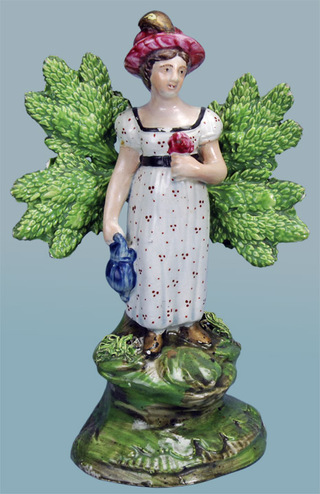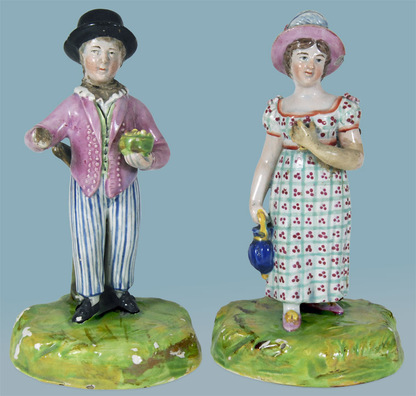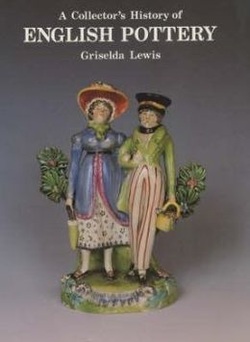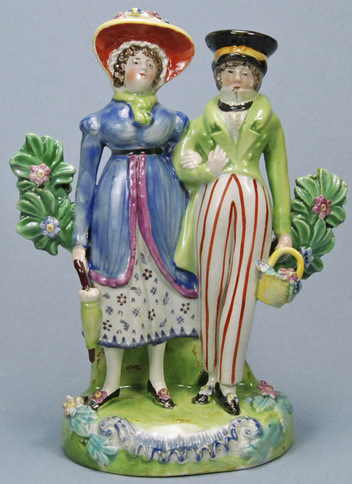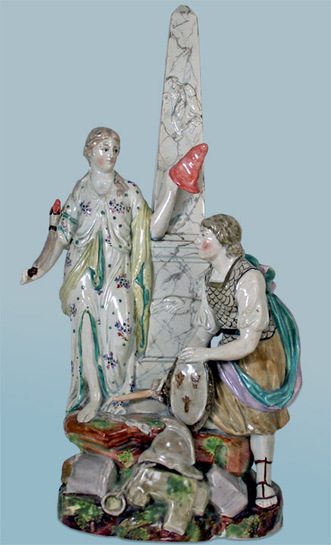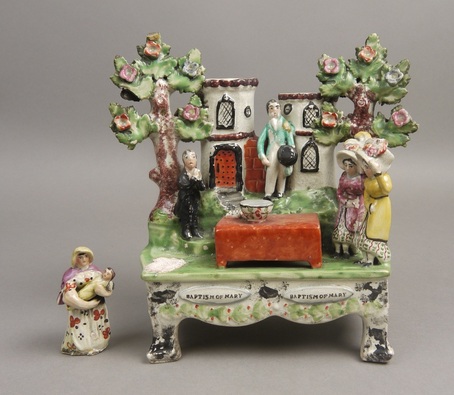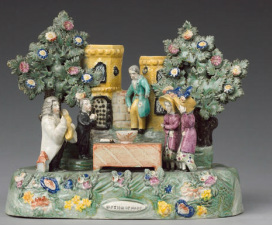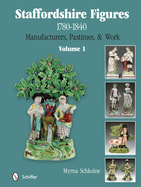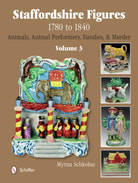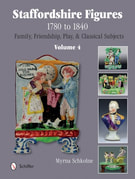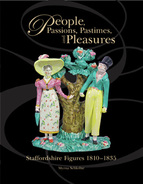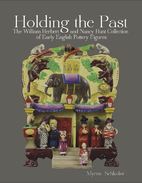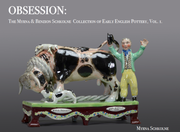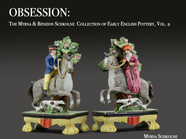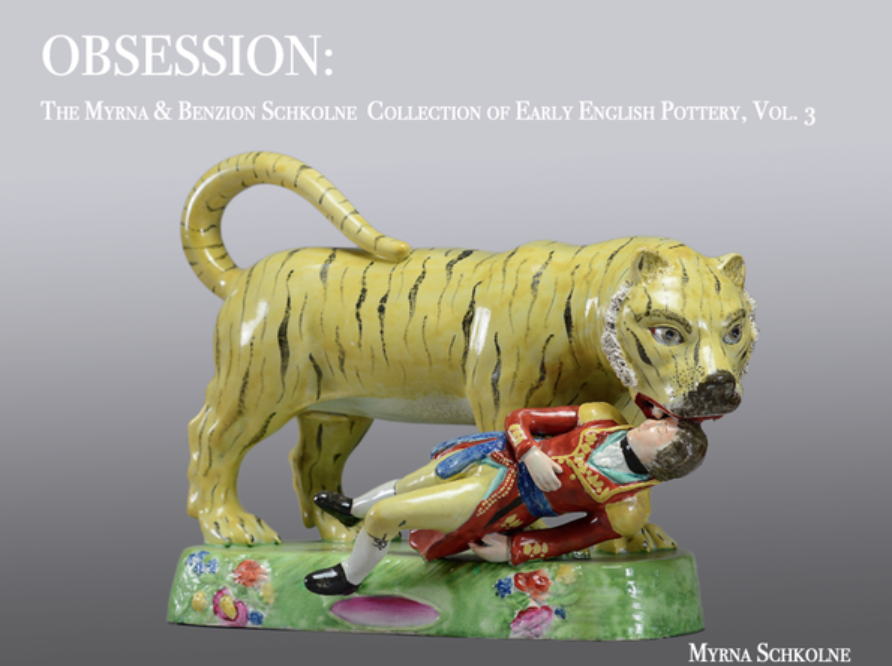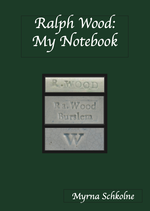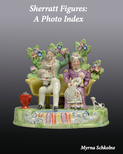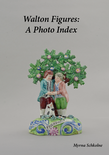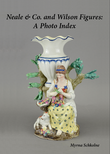Last night, I caught an item on the news about a letter written by a Titanic passenger selling at auction for $200,000. In my opinion, this letter is of as much interest as any old letter written by a non-famous person. Had the Titanic not sunk, would it have been worth anything? The letter writer, one Mrs.Hart, was no tragic heroine. Rather, she was a second class passenger who survived the sinking. Just how does this letter have this enormous value? What would you pay for it? I just don't get it. And did you catch the report last week of the Chinese porcelain cup that sold for $36.1 million, a price that was below the auction estimate? In my ignorance, I imagined that this must be a one-of-a kind cup....but far from it. Turns out that there are at least 17 comparable cups on record. Which brings me back to my husband's point: English pottery is cheap, in fact it is VERY cheap. The only piece to ever crack even the $100K mark at auction was a Death of Munrow that sold at Sotheby's for something in the region of $154,000 not that many years ago. That figure now sits in the Victoria and Albert Museum, but, sadly, I think that this price is an aberration. What happened that day at Sotheby's I do not know, but I would expect that same figure to have gone for a fraction of the price under other circumstances.
How many Death of Munrow's are there? I haven't ever tried to estimate, but I guess somewhere between 20 and 30. But even if we take a much, much rarer early pottery figure, we don't approximate the lofty prices of that Chinese porcelain cup or even the lesser price of $2.1 million paid for a 20th century machine-made baseball card. Case in point are these fabulous figures added to John Howard's stock recently. Both are unique and both sell for under GBP5000. You won't find 17 more of either of these! And, unlike that base ball card, they were wrought entirely by hand.
Recently, I was viewing a private collection when I spied a figure I had not seen before. It comprised two men, the one seated and the other standing. The standing gentleman, who looked rather like Dr. Syntax, was pulling out the other man's tooth. Perfect condition, unique, a piece of social history...even a piece of dental history! And yet you would be able to buy it at a top price of less than $2000. If you got lucky and were in the right place at the right time, you might even get it at no more than Price A. This figure group brought to mind another in very much the same style that I think was made by the same pot bank.
Rather more obviously of merit is this Ralph Wood figure titled Spinning and impressed 81. I know of no other example. Unique, made circa 1790. Sadly, I gave this one a mere Price A. I don't think this figure is very commercial. It certainly is an object of great merit, but not necessarily great beauty. But then how beautiful was that old shirt or the old letter? I know, it's just not fair!!
